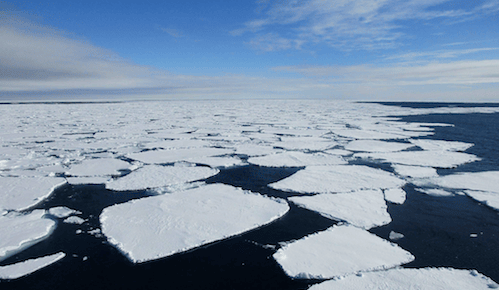
The Antarctic ice sheet is at risk of reaching a tipping point (critical threshold for irreversible large-scale changes) by around 2030–2050 (according to the Paris Agreement + 2 °C atmospheric warming limit): once this threshold is reached, global sea-level rise of several, possibly tens, of meters on timescales of centuries to millennia becomes inevitable.
So, how will the Antarctic ice sheet respond to global warming? What are the main processes driving Antarctic ice sheet retreat? And how much does Antarctica contribute to the projected sea-level rise by 2100 and beyond, as well as in the past?
To answer to these questions, it’s essential to understand how it has behaved in the past while modelling its future evolution. The use of numerical models, the only means to quantitatively predict the future of Antarctica, is challenged by limitations to topographic data and knowledge of how subsurface oceanic, hydrological processes interact with ice dynamics.
A review recently published on Nature Communications (lead author CMCC researcher Florence Colleoni, ODA Division) provides insights into processes operating at the interfaces between the ice sheet, its bed, the ocean and the continental margins around Antarctica, exploring: (1) the importance of subglacial bed morphology and hydrological conditions, as a control on ice-sheet flow; (2) the way continental shelf morphology influences AIS dynamics and ice-sheet sensitivity to ocean forcing; and (3) how ocean exchanges, and in particular the oceanic heat supply to AIS margins, operates at a variety of spatial and temporal scales, with the aim to strengthen our ability to describe past major changes, constrain tipping points and assess rates of previous and future sea-level changes, therefore modeling the Antarctic’s system evolution.
“The ice dynamics is mainly controlled by how the ice flows over its bed”, researcher F. Colleoni, says. “The lack of accurate subglacial topography (occurrence of valleys, high relief, lakes, banks, etc) due to the logistic difficulty to map the entire Antarctic ice sheet subglacial topography, induces large uncertainties on how models simulate the ice flow and its response to atmospheric and oceanic changes. This is why future projections about the Antarctic contribution to sea level remain highly uncertain. In addition, we know now that ocean is playing an important role in the ice shelves thinning and retreat but as for the lack of knowledge in topography, we have very few observations of on how ocean circulates below the ice shelves (topographic obstacles) and on how warm is ocean water. This is also part of the large uncertainties of the Antarctic contribution to future sea level changes.”
Antarctic Ice Sheet is jeopardized by climate change: unlike Greenland, very few surface melting is observed and mass loss mainly occurs by the calving of icebergs at the front of marine terminating glaciers and ice shelves. Recently, scientists discovered another additional threats, that is the ocean-induced sub-shelf melting of the ice shelves: this process is responsible for the fast thinning and retreat observed on several floating Antarctic ice shelves.
Numerical models show that this process could cause for example the fast disintegration of the West Antarctic Ice Sheet (WAIS), whose base is grounded below sea level; moreover, if the topography under the ice sheet has a slope directed inward, and not toward the ocean, the collapse might occur faster, a mechanism defined as Marine Ice Sheet Instability (MISI). Even past records document the repeated rapid retreats of both the East and West components of the AIS (EAIS and WAIS) over the past 5 million years.
The processes taking place within the subsurface environment of both the ice sheet and the ocean, and at the physical interfaces between them (the main issues of the present research), are still understudied, yet critical to fill knowledge gaps on Antarctic ice sheet evolution from the deep past to the future. The review also draws attention to the short-term interactions between ocean circulation in the ice-shelf cavities and ice-sheet dynamics across the grounding zone, which are seldom observed and largely unknown in Antarctica. These interactions potentially induce MISI.
“MISI”, F. Colleoni says, “is the fastest way for the ice sheet to lose a large amount of mass. It occurs on centennial timescales, therefore, at timescales relevant to humanity. Once the ice sheet is destabilised, it loses a large amount of ice until it reaches a new equilibrium. Assessing the areas of Antarctica that might be subjected to this kind of fast instability will be crucial; so gaps in subglacial topography and bathymetry, as well as hydrological conditions might be filled quickly in order to produce projections of future ice mass loss and thus sea level changes.”
A major challenge for the polar community will be to develop new generation of Earth System Models, able to handle large scale to local scale processes occurring on short-term to long-term timescales and to optimise computing resources.
Read and download the full paper:
Colleoni Florence, De Santis L., Siddoway C. S., Bergamasco A., Golledge N. R., Lohmann G., Passchier S., Siegert M. J., 2018 (published on June 18 2018), Spatio-temporal variability of processes across Antarctic ice-bed–ocean interfaces, Nature Communications, 9, 2289, DOI: 10.1038/s41467-018-04583-0


